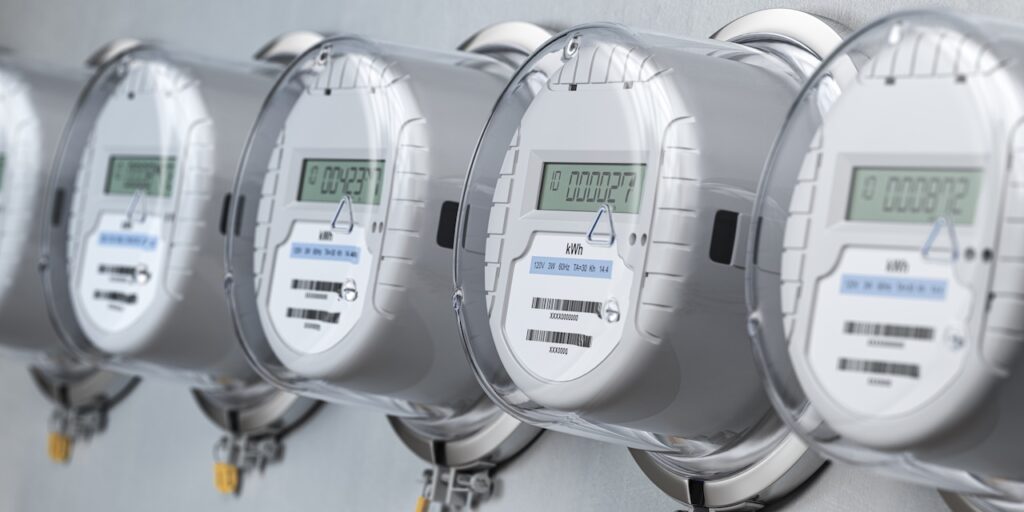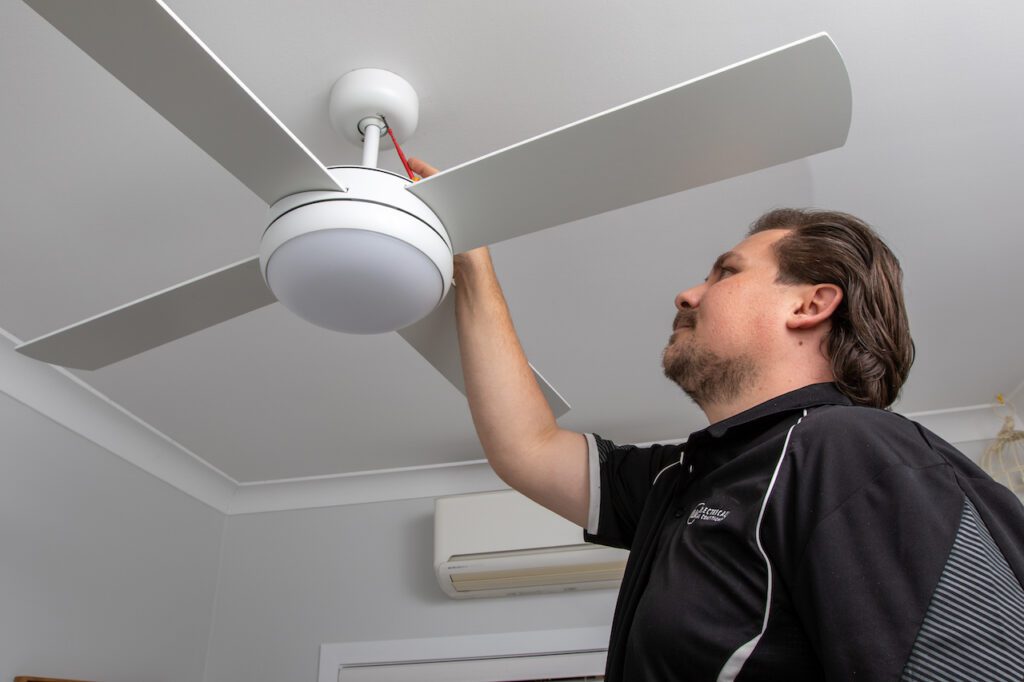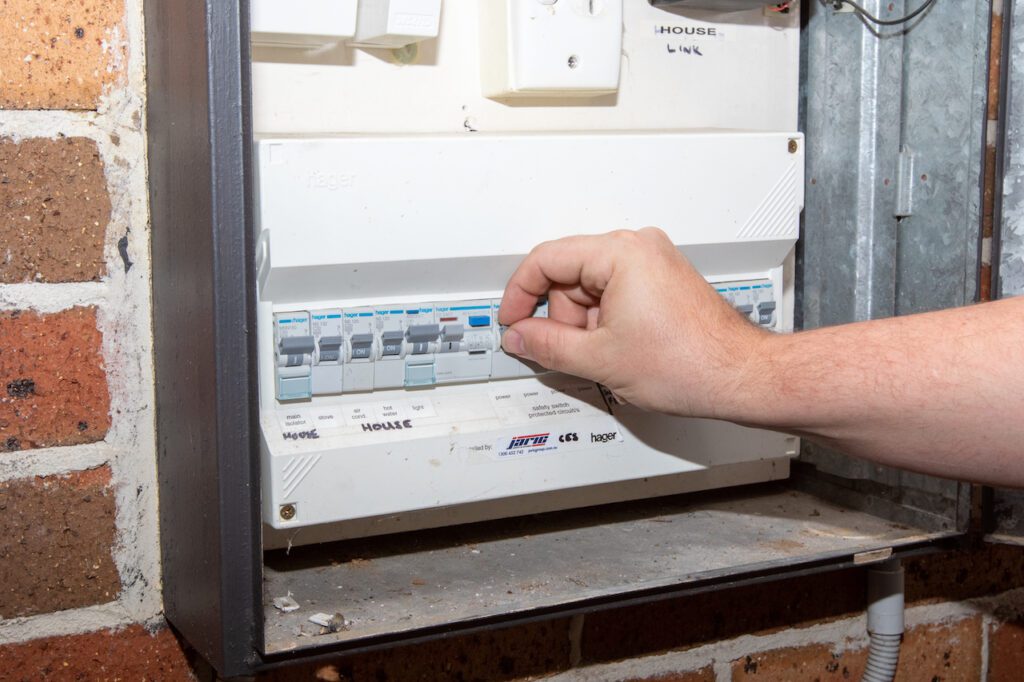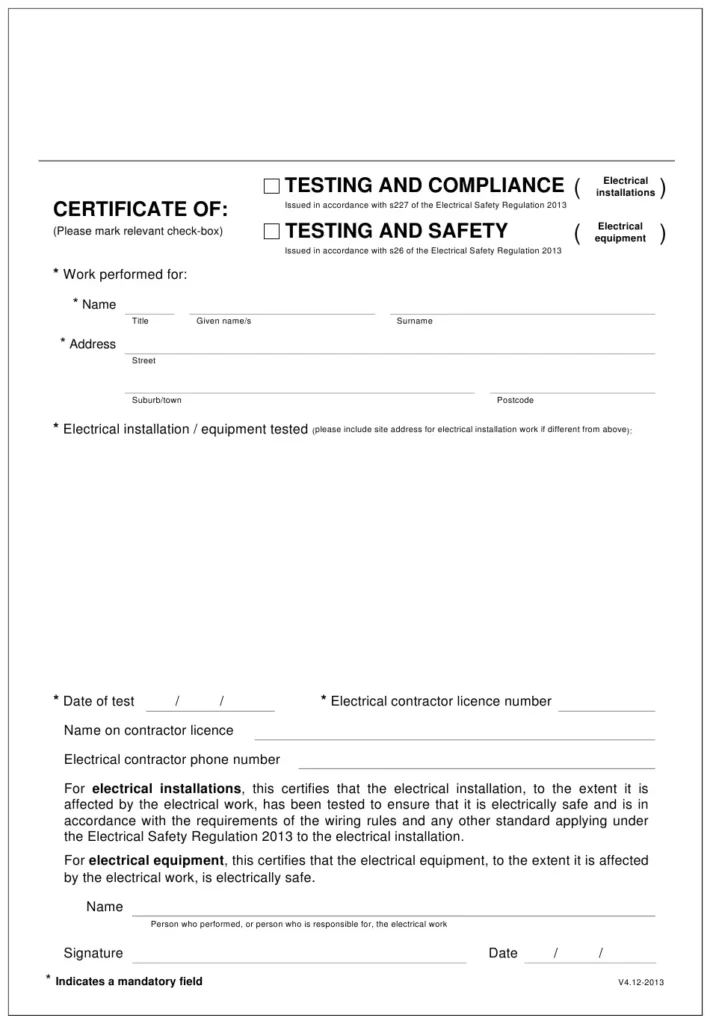Welcome to the complete guide to your electricity meter. As an energy analyst, I’ve put together this comprehensive guide to help you understand how these devices work and why they are so important. With power costs on the rise, it’s more relevant than ever for Australians to monitor their electricity usage and find ways to reduce their bills. In this article, we will explore what an electricity meter is and how it works, as well as tips on how best to use yours.
An increasing number of households now have access to smart meters – a device that allows customers to manage their energy consumption better by providing real-time information about their usage patterns. Smart meters can be used to identify opportunities for efficiency savings and make our homes greener. We’ll take a look at those too!
At its core, the goal of understanding your electrical meter should be liberation from high costs – both financially and ecologically. This guide will give you all the tools necessary for taking control of your own home’s energy management system with confidence. So let’s get started!
What Is An Electricity Meter?
Did you know that the average Australian household uses around 18,400 kilowatt-hours of electricity a year? But how do we measure and monitor our energy use and make sure it’s accurate? The answer lies in understanding your electricity meter. An electricity meter is an essential device used to accurately measure energy usage in homes or businesses. It records this data which is then used by utility companies for billing purposes as well as tracking trends in customer usage over time.
Meter reads are usually taken every three months but new smart meters can be read remotely so you don’t need to wait for someone from the power company to visit each quarter. There are several types of meters available including digital, electromechanical and prepaid metering systems – all designed to enable customers access to their meter readings anytime they need them.
The introduction of the ‘smart grid’ has revolutionised Australia’s energy market with more detailed consumption data now readily available than ever before. This means customers have greater visibility into their own electricity consumption patterns and can track their progress towards becoming more energy efficient – ultimately leading to cost savings on their bills! With better access to meter data, customers can take control of their own energy future while also helping manage demand on the national grid during peak times.
Now let’s move onto understanding your meter data…
Understanding Your Meter Data
As one of the senior electrical managers here at LiVE Services Group, it’s important to understand the meter data you’re working with. Smart meters are becoming increasingly common and have a range of benefits for both residential and commercial customers, but let’s focus on understanding your electricity bill first. Origin Energy is one of the leading providers of electricity services in Australia, so we’ll use them as our example here.
Your electricity bill will provide you with information about your total energy use over time, usually measured in kilowatt-hours (kWh). This can be broken down into different types of usage depending on whether or not you have an interval meter installed at your property – such as peak, off-peak and shoulder rates. Interval meters measure how much power is used during each period through a series of meter readings taken at various times throughout the day or week. If your meter records don’t match up with what’s indicated on your bill then this could mean that either your energy provider has made an error or that your meter is faulty.
In order to ensure accuracy when dealing with any kind of electricity service provider, it’s important to make sure that all of the information provided by the meter reader is correct before making any decisions regarding energy use. While most modern smart meters are capable of collecting accurate data automatically, there may still be discrepancies from time to time if something isn’t working correctly. By double checking all meter recordings against their corresponding bills you can help to minimize these errors and keep track of exactly how much energy you’ve been using over time.
So now that we understand what type of data we should expect from our electric company bills and meters, let’s take a look at how to tell which type of meter you have?

How To Tell What Type Of Meter You Have?
When it comes to understanding your electricity meter, the first step is identifying what type you have. There are generally two types of meters: digital display and analogue meters. Digital displays give an accurate reading of exactly how much electricity has been used, while analogue meters can be read by looking at a dial or pointer on the face of the unit.
If you believe that your house may need a new digital meter installed, there are several ways to confirm this. Firstly, check whether any changes were made to your current meter recently; if so, then it’s likely that a new one was put in place. Secondly, take a look around your property for evidence of recent electrical work – such as wiring boxes with large black numbers indicating installation dates. Finally, contact your energy provider and ask them to verify if they replaced the meter.
Fortunately, many Australian households now have smart meters installed which make calculating usage easier than ever before! Smart meters provide real-time information about consumption and even track when peak time rates apply. If you don’t already have one installed in your home but would like to upgrade from an analogue meter, speak to your energy provider who will be able to help advise on what needs replacing and arrange for someone to come out and install it for you.
In order to begin taking advantage of all these benefits though, you’ll still need to know how to read your electrical meter – a subject we cover next!
How To Read Your Electrical Meter
Learning how to read your electricity meter is essential for understanding and managing your energy usage. It can also help you estimate future bills or switch retailers if necessary. As an energy analyst, I will provide the steps needed to understand the data on your meter so that you can make informed decisions about your electricity consumption.
| Steps | Description |
|---|---|
| 1 | Access Your Meter |
| 2 | Read Your Meter Accumulation Type |
| 3 | Get a Smart Meter Installed |
| 4 | Submit a Self-Meter Read Request |
| 5 | Contact Your Retailer If You Don’t Have Access To The Meter |
The first step is to access your meter, which may require special keys or tools depending on its location and type. Generally speaking, most meters are located outside of homes and businesses near the power line connection point. Once you have access to it, start by reading off all digits from top to bottom as they appear on the display screen. This will give you an overall view of your total electricity usage since the last time readings were taken.
If you have an accumulation type electric meter then there should be several small dials with numbers ranging from 0–9 along with some non-numeric symbols such as “K” or “A”. These numbers must be noted down individually before being added together (with larger figures taking precedence over smaller ones) in order to get a full picture of total electrical use since installation – this figure represents kilowatt hours (kWh).
Getting a smart meter installed at your property is another way for more accurate tracking of energy use over time; however this does incur additional costs due to installation fees charged by certain providers. Alternatively, submitting self-meter reads requests via online portals may allow customers who don’t have direct access to their meters still receive bill estimates based on past readings submitted by themselves or others in their area/region during similar periods of consumption patterns. Lastly, contacting your retailer directly may provide assistance if any questions arise throughout the process of reading or accessing one’s meter information.
By following these simple steps anyone can easily track their electricity usage and gain insight into their own individual habits when it comes to using energy within their home or business environment – empowering them with knowledge that can lead towards smarter choices around sustainability and cost savings too! With this newfound awareness we can move forward confidently knowing our actions now will benefit us later…
Can I Estimate My Energy Bill Based On My Meter Readings?
Estimating your energy bill based on meter readings is a great way to manage and monitor your electricity usage. It can help you save money, identify electrical problems, and make sure that you’re getting the best deal from your energy provider. Here are five tips for estimating your energy bill:
- Record Your Electricity Usage – Records of your electricity usage over time will enable you to accurately estimate how much power you use each month and what it could cost you in terms of bills.
- Ask Your Retailer About Meter Readings – If you don’t have access to regular meter readings, ask your retailer if they’ll provide them directly. This should give you an idea of what kind of costs to expect when billing season rolls around.
- Investigate Smart Meter Installation Options – A smart meter installation could provide more accurate readings as well as insights into how much power is being used by various appliances or systems within the home such as a solar PV system.
- Check Your Meter if You Haven’t Changed Providers Recently – If you haven’t switched providers recently then check with your current supplier about any deals or discounts available through their services which may reduce the overall cost of electricity for you in the long run.
- Look at Other Energy Offers – There are lots of other offers out there so it’s worth exploring all options before committing to one particular offer; this includes looking at different rates offered by multiple suppliers and comparing these against each other before making a decision on who to go with for your energy needs.
By understanding how to read meters, understanding what rate plans are available, and tracking household electricity usage over time, it becomes easier for consumers to understand their monthly energy bill and plan accordingly when budgeting their finances going forward.

How To Access Your Electrical Meter
Do you know how to access your electrical meter? It’s not as complicated as it sounds. With the right tools and resources, anyone can get a better understanding of their electricity usage.
To start, let’s look at what type of meter you have installed: an analog or digital one. Analog meters are usually found in older homes while digital ones are more common in newly constructed houses. If you’re unsure which kind is running on your property, contact your retailer for assistance. Digital meters come with several advantages over analog ones since they allow customers to easily read and interpret energy data on the spot – no need for additional equipment!
In some cases, if you live in buildings like apartment complexes that have embedded networks, you may be unable to access direct readings from the actual meter itself. Fortunately, many retailers now offer smart meters which provide real-time information about energy consumption and even personal information such as billing cycles and payment histories directly to customers through their phones or computers. By replacing your current analog meter with a smart one, not only will you gain greater insight into your own energy use but also benefit from lower bills due to reduced wastage.
By accessing accurate readings from either your existing or new meter, you’ll be able to take complete control of your national electrical expenditure and make smarter decisions when it comes to saving money throughout the year.
What Are Smart Meters And How Can They Benefit Me?
As we discussed, one of the first steps to understanding your electricity meter is gaining access. Now that you know how to do this, let’s dive into what smart meters are and why they can be beneficial for Australians looking for more control over their energy usage.
Smart Meters: What Are They?
A Smart Meter is a new type of electrical meter which records the amount of electricity used in intervals throughout the day (typically every 30 minutes). It then sends this data electronically back to your electricity distributor who use it to manage energy supply across Australia’s national energy market. This provides them with real-time information about how much electricity households and businesses are using, allowing them to make adjustments if needed.
| Benefits | Drawbacks |
|---|---|
| Gives you power of choice – You can monitor your own energy consumption through apps or devices | Installation cost & disruption – The installation process usually requires an electrician and may take some time depending on where your existing meter is located. |
| Provides better insight – You will have a detailed view of when electricity is being consumed so you can adjust accordingly. | Complexity – Depending on the system installed, managing multiple accounts or different tariffs could become complicated for users due to lack of knowledge/experience. |
| Notifications – Notify your electricity provider if there’s an issue with your current meter or when moving house so appropriate changes can be made quickly and easily. | Vulnerability – Some systems might not fully secure customer’s data from potential hackers as well as other potential cyber threats like malware attacks or leaked personal information. |
Smart Meters provide homeowners with more control over their energy usage by giving them greater visibility into how much electricity they’re using each day as well as providing insights into when peak times occur during any given month. Additionally, customers are able to set up notifications such as alerts when bills go above a certain threshold or reminders when approaching deadlines for billing payments. This feature helps ensure accuracy while also helping people stay informed about the status of their energy usage without having to manually check themselves each month. Finally, installing a Smart Meter gives Australian residents the power of choice; enabling them choose between different plans that best suit their needs and budget goals.
By taking advantage of these benefits, Australians can start making more conscious decisions about their energy consumption in order to reduce costs and help contribute towards a greener future too! Installing a Smart Meter opens many doors for consumers wanting reliable service at competitive prices along with easier management tools than ever before
Installing A Smart Meter
As the electrical industry continues to evolve, so too does the technology that is used to measure and monitor energy usage. Installing a smart meter is now an integral part of many households’ energy management plans as well as for businesses across the country. A smart meter replaces manual meter readers who would have visited homes to take readings every quarter or half year. By having a digital connection between your home and your energy retailer, you can more easily keep track of your energy consumption and ensure that bills are accurate.
Smart meters store data on national electrical networks which can then be accessed by both customers and retailers alike. This means that there will no longer be any need for scheduled interruptions when it comes time to read the meter; instead all information will already be available online within business days after end of its life cycle. Customers also benefit from greater control over their energy usage with near real-time access to their own data via an app or website portal allowing them to better understand how they use power around their home or business.
The installation process itself requires minimal effort from the customer, often just checking availability before sending out an engineer who completes everything else required including registering the new device with your chosen retailer. With technological advances like this, customers gain greater visibility into their own energy usage patterns while providing peace of mind knowing that billing accuracy won’t become a problem down the road due to incorrect readings from manual reading services. Smart meters truly offer unprecedented convenience when it comes managing your Australian energy needs!
Frequently Asked Questions
How Often Should I Check My Electrical Meter Readings?
As an energy analyst, I’m often asked how frequently one should check their electricity meter readings. It’s a great question and the answer is actually quite simple – you should be checking your reading at least once every three months. Not only will this help to ensure that you’re not being overcharged for your energy bill, but it can also be beneficial in helping you identify any potential problems with your power supply which may need to be addressed.
It’s always best practice to double-check your readings before submitting them to your supplier. This ensures that nothing has been missed or misread, so that you can avoid any unnecessary costs due to incorrect billing. Checking in on a regular basis also allows you to spot any irregularities in usage patterns and take steps towards correcting them. In some cases, these irregularities could even signify issues with wiring or other electrical components of your home which must be fixed as soon as possible for safety reasons.
When taking readings from meters located outdoors, it’s important to consider factors like weather conditions which might affect accuracy; if necessary use protective gear such as gloves and eyewear when operating the equipment in order to reduce risks of injury or damage. Additionally, making sure all lights are off while taking measurements helps provide more accurate results since they don’t interfere with the functioning of the device. Keeping track of these readings gives us insight into our energy consumption habits and enables us make informed decisions about ways we can conserve energy and save money on our bills in the long run!
Can I Install An Electricity Meter Myself?
Are you wondering if you can install your own electricity meter? Well, it’s a decision that shouldn’t be taken lightly. As an energy analyst, I wouldn’t recommend going the DIY route unless you’re confident in your ability to safely and correctly complete the job.
Firstly, let’s look at what is involved in installing an electricity meter. It requires knowledge of electrical wiring and safety hazards. You’ll also need specialised tools for this task, such as wire strippers and pliers. And depending on which electric meter you chose, there may be additional requirements like battery replacement or calibration setup. So make sure to do your research before attempting any installation process!
Next up is gaining approval from your local government authority or utility provider. They will have their own set of regulations regarding who can install meters and what type of equipment they must use. This step is often overlooked but should not be ignored since failure to comply with these rules could result in significant fines or other penalties.
So while it might sound tempting to save some money by taking on the project yourself, I would suggest leaving this one to the professionals – even if it means investing a little more upfront. Professional installation guarantees that everything meets legal standards and will ultimately give you peace of mind knowing that all safety protocols are being adhered to when dealing with something as important as electricity supply.
Are There Any Safety Concerns To Consider When Interacting With An Electrical Meter?
Interacting with an electricity meter can be a daunting task, but there are certain safety concerns that should be taken into consideration. As an energy analyst, it’s important to understand the risks involved in order to ensure safe and proper use of this essential piece of equipment. Here is what you need to know:
- Always remember to turn off the power supply before attempting any work on your electrical meter.
- Ensure that all tools used for installation or removal are properly insulated from electric shock hazards.
- Make sure to wear appropriate eye protection when dealing with live circuits or electrical components.
- Never touch any exposed wires or terminals as these could contain high voltage potentials which could cause serious injury or even death if not handled correctly.
The risk of electrocution or fire damage due to improper handling of an electricity meter is real and must not be underestimated; however, by following simple safety procedures and taking necessary precautions, one can greatly reduce their chances of experiencing these dangers while working on their own meters. For instance, never attempt to repair a malfunctioning meter without shutting down the main power source first – doing so could result in catastrophic consequences if done incorrectly! Furthermore, always make sure that all tools being used during installation/removal are adequately insulated against any possible shocks they may encounter along the way – failure to do so could lead to severe electric shocks or worse! Finally, it’s also important to wear protective eyewear at all times when dealing with live circuits/components as these too can inflict considerable harm on someone who isn’t prepared accordingly.
In short, understanding and implementing basic safety protocols when interacting with an electricity meter will go a long way towards preventing dangerous accidents from occurring in the future – something that no one wants! So take care when performing maintenance tasks on your meter and always keep safety at the forefront of your mind when working around potentially hazardous materials such as those found inside most modern-day homes today.
Are There Any Restrictions On Who Can Access My Electricity Meter Readings?
Accessing your electricity meter readings can be a tricky business, as there are restrictions on who is allowed to read them. As an energy analyst, I’m here to provide you with the information necessary to understand these restrictions fully.
First of all, it’s important to note that only accredited personnel and people authorised by approved energy companies have access to reading your electricity meter. This means that if someone claiming to be from the energy company comes knocking at your door asking for access to your meter reading, make sure they’re legit! It’s also worth noting that any technical work done near or around the meter must comply with safety regulations set out in relevant legislation – so it pays to know what kind of protection measures should be taken when dealing with electrical readings.
The good news is that some states allow customers themselves to obtain their own electricity meter readings – although this will still depend on whether or not you’re using a smart meter. If you do decide to get involved yourself, please keep in mind that interacting directly with the meters carries risks due to exposure and proximity – so if you’re unsure about anything, leave it up to the pros. And always check with your energy provider regarding any further requirements before taking action.
With those things in mind, remember: safety first! Accurately understanding the limits of who has access to your meter readings is key for protecting yourself against unexpected bills and potential theft. So take time now and familiarise yourself with these guidelines – doing so could save you lots of stress down the line!
Is It Possible To Switch From A Regular Meter To A Smart Meter?
Smart meters have taken the world by storm and are becoming increasingly popular in Australia. As an energy analyst, I’m often asked about switching from a regular meter to a smart meter. The answer is yes—it’s possible! Here’s what you need to know:
First off, let me say that there are some pretty nifty benefits to having a smart meter. They allow for more accurate readings of your electricity consumption, meaning you can keep better track of where your money is going each month. Plus, they come with built-in security features so your data stays safe and secure.
There are several things to consider before making the switch:
- Cost – Is it worth paying the upfront cost?
- Installation – Who will install and maintain the device?
- Energy monitoring – How do you access real-time information on your usage?
- Privacy – What measures are put in place to ensure your data remains private?
When deciding if this transition is right for you, it’s important to weigh up all these factors and make sure that any provider you work with is reliable and trustworthy. Smart meters offer great potential but only when used responsibly. If done correctly, they can help reduce costs, streamline processes and provide greater control over how we use our resources – liberating us from worrying about our bills all the time!
Conclusion
In conclusion, it is important to understand the importance of electrical meters. They provide vital information about our energy consumption and allow us to make informed decisions on how best to manage our bills. As such, we should all be aware of basic safety considerations before interacting with an electrical meter as well as being mindful of any restrictions around who can access readings from them. In addition, there may be opportunities for individuals to switch from a regular meter to a smart meter in order to further reduce their energy costs.
It is also worth considering a theory that has been suggested by some energy analysts: when people become more conscious of what they use regarding energy resources, they tend to become more efficient with their usage and ultimately save money over time. This could potentially lead to significant savings in terms of both financial costs and environmental impact – two factors which are increasingly important considerations in modern society.
Overall, understanding your electricity meter and its associated processes is essential if you want to ensure that you’re using energy efficiently and saving money where possible. With this knowledge comes greater control over your own personal energy needs, as well as helping contribute towards creating a greener future for everyone.






